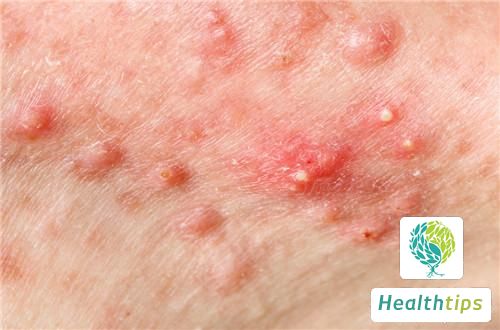1. Premenstrual acne and its management
Before menstruation, women may experience acne breakouts, which can affect the appearance of their skin. Acne can also pose significant harm to the skin, potentially leading to acne scars. To improve this condition, it is recommended to consume acne-reducing foods, avoid spicy and alcoholic foods, keep skin pores unblocked, and wash the face regularly in the morning and evening. So, what should we eat to manage acne before menstruation? Let's take a look.
Firstly, regulating the endocrine system mainly involves dietary and exercise habits. In severe cases, medication may be necessary. It is crucial to develop healthy eating habits, including eating plenty of fresh fruits and vegetables, and sticking to a bland diet. Consume foods rich in fresh fruits and vegetables, high-protein foods, and drink plenty of water to maintain the body's hydration. For individuals with insufficient Qi and blood, foods like black rice, small dates, red beans, and white fungus can help replenish Qi and blood. Cold foods should be avoided. Additionally, engaging in various physical activities can help strengthen the body. It is also essential to maintain a scientific lifestyle, avoid staying up late frequently, ensure adequate rest and sleep, and avoid excessive fatigue and stress to maintain a pleasant mood. Preventing infections, avoiding the use of plastic household items, and minimizing exposure to environmental hormones are also crucial.

2. Causes of acne
Acne is closely related to excessive sebum secretion, blockage of hair follicle and sebaceous gland ducts, bacterial infection, and inflammatory responses. After puberty, the level of androgens, especially testosterone, rapidly increases in the body, promoting the development of sebaceous glands and the production of large amounts of sebum. Abnormal keratinization of hair follicle and sebaceous gland ducts can lead to duct blockage and impaired sebum excretion, forming keratin plugs known as microcomedones. The proliferation of various microorganisms, especially Propionibacterium acnes, in the hair follicles can cause the lipase produced by these bacteria to decompose sebum into free fatty acids. This, along with the chemotaxis of inflammatory cells and mediators, ultimately induces and exacerbates inflammatory responses.
3. Common symptoms
Acne lesions commonly occur on the face, upper chest, and back. Non-inflammatory acne lesions manifest as open and closed comedones. Closed comedones, also known as whiteheads, are typically 1-millimeter-sized skin-colored papules with no visible hair follicle openings. Open comedones, or blackheads, appear as dome-shaped papules with significantly dilated hair follicle openings.




















